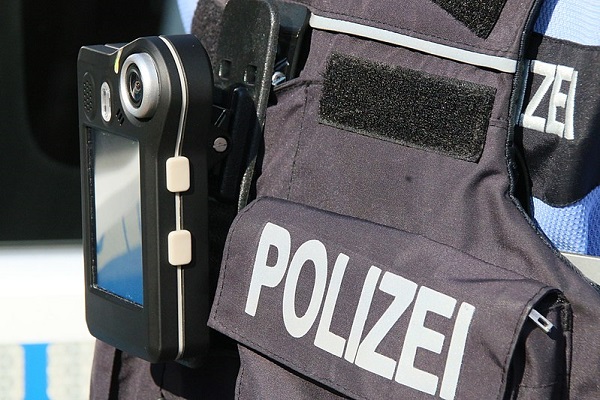Following a global trend, on March 19th, the acting governor of Rio de Janeiro state, Claudio Castro (PSC), decreed the mandatory installation of body-worn cameras (BWCs). The decree, made through an act published in the state’s official gazette, stated that BCWs are to be attached to the uniforms of public and military agents of several public institutions, including the Civil Police (PCERJ) and the Military Police (PMERJ). Important images are to be stored for a minimal period of 1 year.
In the decree, it is described that the main purpose of the equipment is to clarify accusations against agents or against civilians. In addition, it aims to mitigate the actions of people in conflict with the law by being able to produce evidence of their offenses. There is also one important and implicit objective, which is the reduction of police abuse.
The searched results are important, given that in 2019 and in 2020, 1.814 and 1.245 people died under police custody in Rio de Janeiro state, respectively. When it comes to Military Police agents killed in service, in 2019, 22 were killed, and in 2020, 14 were killed. 5 Civil Police agents were killed in 2020 and none in 2019.
The measure, society and police corporations should help to regain trust in justice given that cameras allows for the collection of evidences which can be used in Courts. The reduction of police abuse may not be as relevant as it is expected by most, but there are positive expectations.
THE GLOBAL TREND
BWCs are used all around the world: USA, UK, France, Germany, China, United Arab Emirates and several other countries. In Brazil itself the strategy is also used, and the Military Police of São Paulo state (PMESP), started to use BWCs last year and has progressively increased the acquisition of such devices. By June of this year, PMESP will have more than 3.000 BWCs. Recently, on March 2nd, the Supreme Court of Justice decided that police officers must record, on audio or video, the declaration of residents authorizing police agents to enter their homes without a warrant.
The use of body-worn cameras is a global trend, which Brazil is embracing. As already outlined, the outcome of the technology should have a positive impact during trials due to the possibility to use of images as evidence. Regarding police behaviour, it should inhibited abuses.
WHAT CAN BE EXPECTED
In March 2019, Stanford university published a study following experiments in Rocinha, in Rio de Janeiro, between 2015 and 2016. The study showed that the use of ammunition was significantly smaller (45%) by agents equipped with BWCs. There were also 34% less reports about abuses committed by police agents with BWCs. However, in at least 18% of cases, police agents did not turn on the cameras at any point of the shift. The study also suspected that many agents reduced their activities during the experiments to avoid getting caught committing transgressions.
Thus, an important aspect of the issue is related to the BWCs activation protocol. The authority should decide whether there is discretionary use, being the agent the one who chooses when to activate the camera or mandatory use during operations or the whole turn. Claudio Castro’s decree, nevertheless, did not specify which one would be used.
Even though the cameras have potential to deter police agents from using excessive force or committing infractions, the results may differ. In May 2020, a case of international repercussion happened in the USA, when the African American George Floyd was choked to death by police agents. The episode was filmed by different cameras, from CCTVs, pedestrians and even BWCs. According to the former police agent responsible for the death, he followed the official police approach guidelines.
In Floyd’s case, cameras were not able to stop the apparent abuse of force from the agent, however, they are now used during the trial of the policeman. A better application of justice and punishment enabled by evidence gathered by the BWCs, may improve the relationship between police corporations and society and a better confidence in the Judiciary Power.
However, viewing technology as the sole solution can lead to a neglect of sound public security strategies. In addition, high technology plays an important role in public security, but in many situations, it makes sense to step back and take a “back to basics” approach which suggests that in public (and private) security, the selection and the training of the agents is fundamental.



